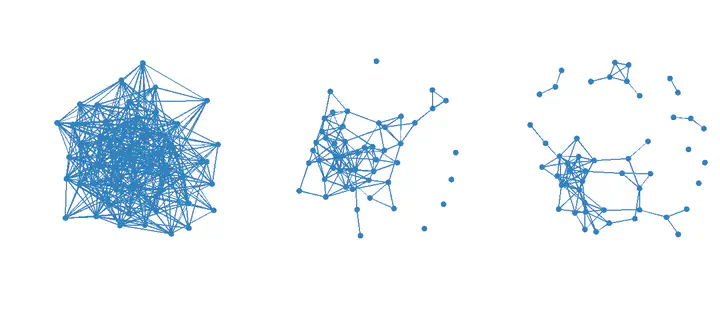 Examples of social networks (50 individuals) obtained in the two-step model under zero (Pa = 0, left), moderate (Pa = 0.4, middle), and high (Pa = 0.8, right) inheritance of avoidances.
Examples of social networks (50 individuals) obtained in the two-step model under zero (Pa = 0, left), moderate (Pa = 0.4, middle), and high (Pa = 0.8, right) inheritance of avoidances.Abstract
Social structure can have significant effects on selection, affecting both individual fitness traits and population-level processes. As such, research into its dynamics and evolution has spiked in the last decade, where theoretical and computational advances in social network analysis have increased our understanding of its ecological and inheritance underpinnings. Yet, the processes that shape the formation of structure within social networks are poorly understood and the role of social avoidances unknown. Social avoidances are an alternate of social affiliation in animal societies, which, although invisible, likely play a role in shaping animal social networks. Assuming social avoidances evolve under similar constraints as affiliative behavior, we extended a previous model of social inheritance of affiliations to investigate the impact of social inheritance of avoidances on social network structure. We modeled avoidances as relationships that individuals can copy from their mothers or from their mother’s social environment and varied the degrees to which individuals inherit social affiliates and avoidances to test their combined influence on social network structure. We found that inheriting avoidances via maternal social environments made social networks less dense and more modular, thereby demonstrating how social avoidance can shape the evolution of animal social networks.